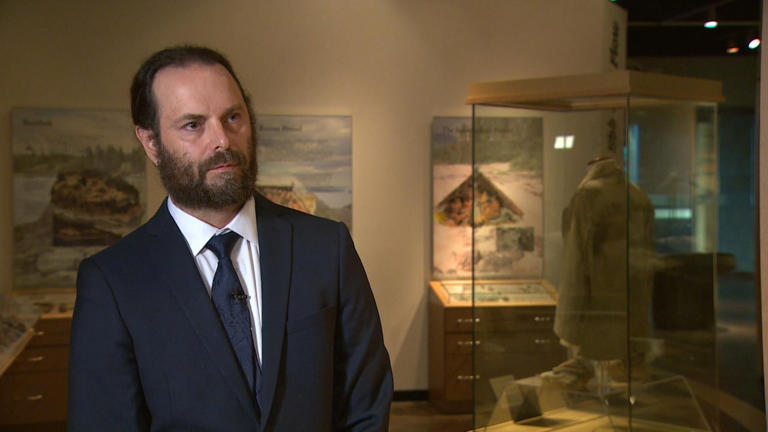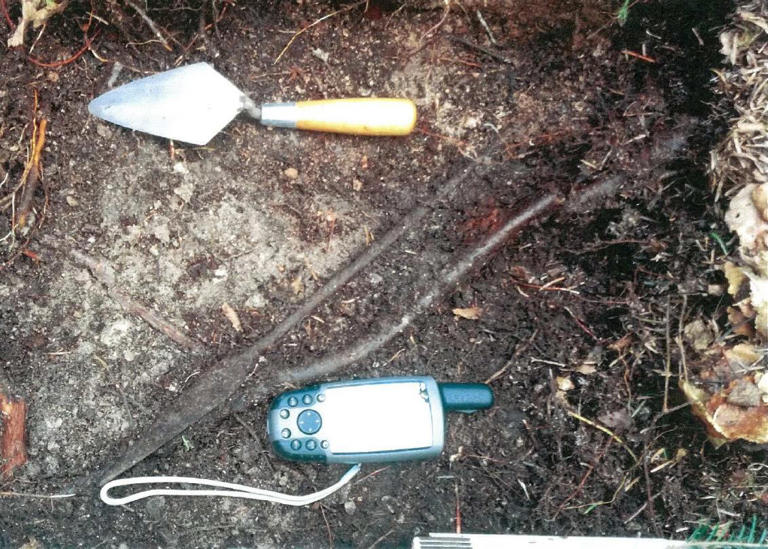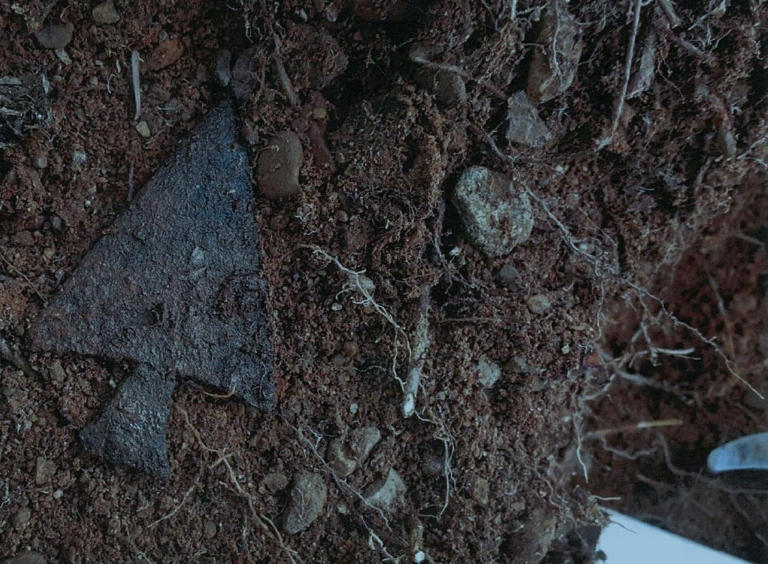Story by Ryan Cooke • CBC
When Don Pelley discovered the raised sides of a former Beothuk dwelling in 2016, everyone involved in the expedition knew he'd stumbled upon something special.
The circular pit was perfectly intact, where the Beothuk had erected walls about 200 years earlier. There was no sign of interference from the amateur archaeologists who swept the Beothuk Lake region years ago with metal detectors, digging up all manner of artifacts and leaving little in the ground.
It was the rarest find in that region for decades.
"At the time that it was discovered it was the only known Beothuk house pit in that region … that had not been impacted by erosion or unauthorized digging," said provincial archaeologist Jamie Brake.

Jamie Brake, Newfoundland and Labrador's provincial archaeologist, says more excavations are planned for the area so as much can be learned as possible before the site is lost to erosion. (Ted Dillon/CBC)© Provided by cbc.ca
Beothuk Lake was the last refuge for Newfoundland's Indigenous group. They struggled with European diseases, violent encounters, and losing crucial migration routes to colonization. Shanawdithit, widely recognized as the last Beothuk, died in 1829.
Residents around Beothuk Lake have raised concerns that the last remaining archaeological sites could be lost due to water levels on the lake, which doubles as a hydroelectric reservoir.
After the site was discovered, Brake said, archaelogists were concerned about erosion and teams have taken action to learn all they can from the house pit before it gets swallowed by the lake.
What's been done to protect the site
The area was mapped by drones, and the land was surveyed in and around the house pit. Crews removed trees that were deemed to be at risk of falling over and damaging the site.
Archaeologists have spent parts of three summers excavating the most vulnerable parts — removing important artifacts before they're lost to erosion.

A pair of Beothuk deer spears were uncovered near the site. Brake says they're perhaps the best preserved example of the tool used to hunt caribou. (Submitted by Jamie Brake)© Provided by cbc.ca
Among the items found were a pair of deer spears — metal rods taken from European settlements and sharpened at the tip to kill caribou. Brake said they're perhaps the best preserved spears uncovered by archaeologists.

This harpoon tip was found near the remnants of a Beothuk mamateek on Beothuk Lake. Its presence at an inland site shows the continued importance of coastal seal hunting right to the end of the Beothuk period, says Brake.
Submitted by Jamie Brake)© Provided by cbc.ca
Another item found was a pointed piece of iron, which is an exact match to a drawing done by Shawnadithit depicting the end blade for a harpoon that would have been used for sealing.
Shawnadithit was one of the last Beothuk people, captured by English furriers in 1823. She died of tuberculosis in 1829.
Brake said more excavations are planned for the area, to learn as much as they can before the site is lost to erosion.
Another item found was a pointed piece of iron, which is an exact match to a drawing done by Shawnadithit depicting the end blade for a harpoon that would have been used for sealing.
Shawnadithit was one of the last Beothuk people, captured by English furriers in 1823. She died of tuberculosis in 1829.
Brake said more excavations are planned for the area, to learn as much as they can before the site is lost to erosion.
Artifacts tell a story
The items found help archaeologists date the site to the late 1700s or early 1800s, Brake said, which falls toward the end of the Beothuk period.
Its location is also important. While water is now sloshing against the walls of the house pit, it would have been located deep inland before Beothuk Lake was dammed and flooded in the early 1900s.
It dates to a period where the Beothuk were trying to hide from Europeans who were taking over important hunting and fishing grounds, Brake said.
In that context, the presence of a sealing tool is a curious find — since there are no seals in the middle of Newfoundland. Brake said it shows the Beothuk still must have trekked to the coast at some point, despite moving further inland to avoid detection.
"It's probably a good indication of the continued importance of the coast for these people right to the end," Brake said.
More discoveries possible — but leave it to professionals
The discovery of an inland site sparks some hope that more could be discovered in places that haven't been searched before — not just at Beothuk Lake, but in other areas around the province.
Brake said it's important that work be done by archaeologists. An artifact taken without proper study is an artifact lost, he said.
"If it's pulled out of its context, you lose its meaning," Brake said. "[It's] sort of like taking a word out of a page of a book. Once it's taken out of its context, you can no longer understand what it is, what its meaning is."
The stakes are huge, Brake said. Every item can go a long way to discover more about a people who are no longer here to share their own history.
"There's such a small amount of of surviving Beothuk material in existence today," Brake said. "We lose a tremendous sort of opportunity to learn more about these people. We lose a portion of the very limited physical legacy of the Beothuk. So every feature matters enormously. Every artifact and every site."
No comments:
Post a Comment